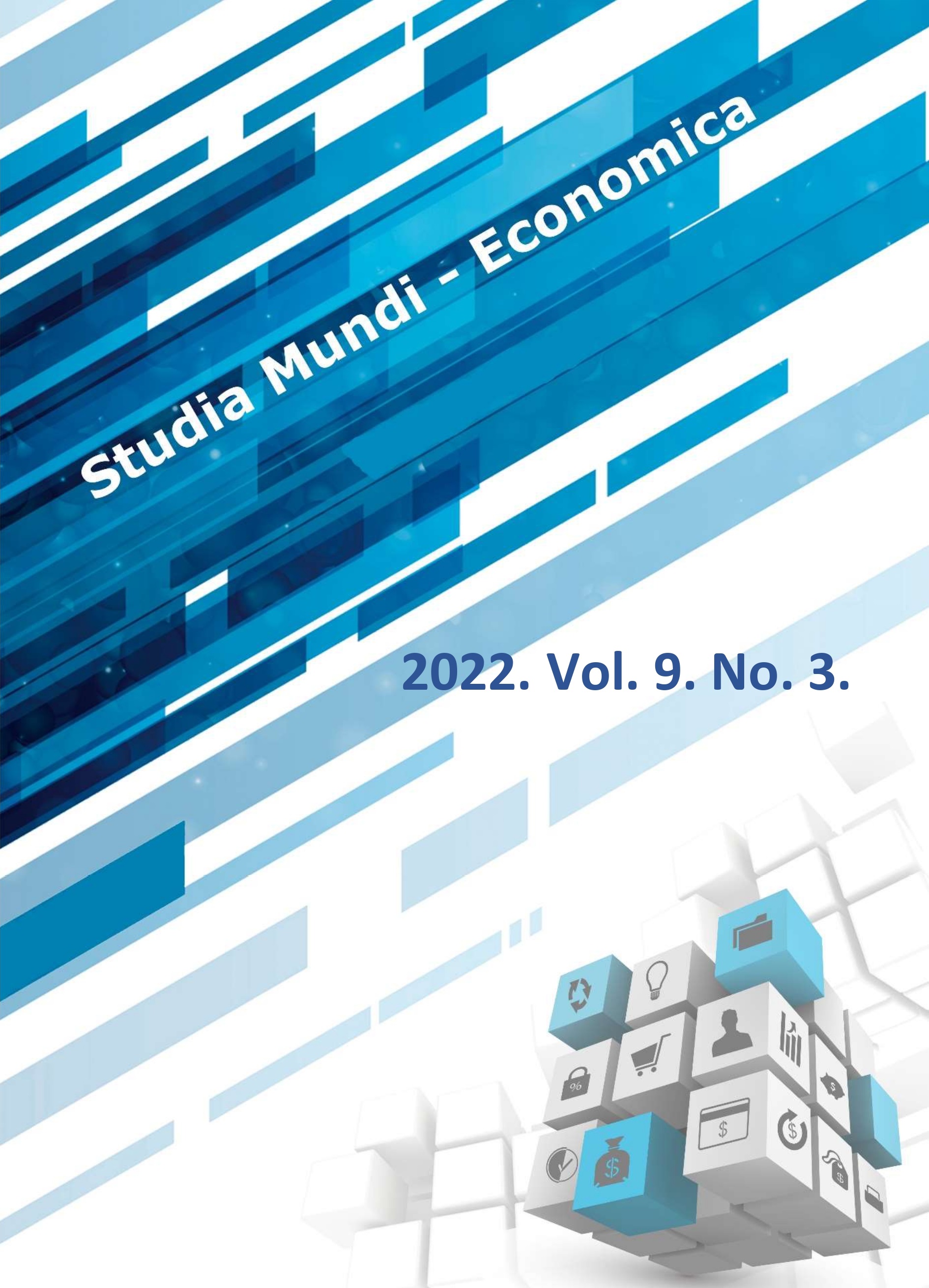Innovation scoreboard indicators between Serbia and Hungary
DOI:
https://doi.org/10.18531/Studia.Mundi.2022.09.03.14-29Schlagwörter:
Innovation scoreboard, DEA, Hungary, Serbia, innovation progressAbstract
The world cannot be imagined without innovation progress therefore its measurement and evaluation are highly important. The aim of the paper is to present the importance of innovation progress in the framework of the EU and present the innovation capacities between Hungary and Serbia in the time frame of one decade based on defined innovation inputs distributed through selected outputs. The paper presents the main innovation scoreboard indicators of Serbia and Hungary in the period between 2011 and 2020 presented as descriptive data and at the end wrapped in Data Envelopment analysis with the help of the Malmquist index. In total eight indicators describing human capital, innovation assets, and business research activities were considered for the analysis. In conclusion, Hungary performed better compared to Serbia, and during the examined period neither of the country faced significant falls but as well the progress is quite static and slow.
Literaturhinweise
Abdal, A., Torres-Freire, C. E., Callil, V. (2016): Rethinking sectoral typologies: A classification of activity according to knowledge and technological intensity. RAI Revista de Administração e Inovação Vol. 13. (4) pp. 232-241. DOI: https://doi.org/10.1016/j.rai.2016.09.006
Azagra Caro, J.M. - Grablowitz, A. (2008): Data on business R&D: comparing BERD and the scoreboard. EUR Number: 23364 EN, – Joint Research Centre, Institute for Prospective Technological.
Berquist K. - Fink C. - Raffo J. (2017): Identifying and ranking the world’s largest clusters of inventive activities. Economic Research Working Paper no. 34. WIPO – World Intellectual Property Organization. URI:
http://hdl.handle.net/2445/178878
Caves, D.W., Christensen, L.R., Diewert, W.E. (1982): The economic theory of index numbers and the measurement of input, output, and productivity. Econometrica: Journal of the Econometric Society, pp.1393-1414. DOI: https://doi.org/10.2307/1913388
Dahlstrand, A.S., Stevenson, L. (2010): Innovative entrepreneurship policy: linking innovation and entrepreneurship in a European context. Annals of Innovation & Entrepreneurship vol.1 (1), pp.5602 – 5618, DOI: https://doi.org/10.3402/aie.v1i1.5602
Ekinci Y. et al. (2015): A review on the comparison of EU countries based on research and development efficiencies. WASET. International Journal of Social, Behavioral, Educational, Economic, Business and Industrial Engineering, 9(7), pp.2368-2371. ISSN: 2010-376X
Hirsch-Kreinsen, H., Jaconson, D. Laestadius, S., Smith, K. (2003): Low-tech industries and the knowledge economy: state of the art and research challenges. PID https://nbn-resolving.org/urn:nbn:de:0168-ssoar-109620 (accessed - May 2022)
Johnsen, J. (2006): Efficiency and productivity change in the English higher education sector from 1996/97 to 2002/03. Lancaster University Management School Working Paper 2006/017. https://www.lancaster.ac.uk/media/lancaster-university/content assets/documents/lums/economics/working-papers/EfficiencyProductivityChange.pdf
Edquist, C. - Zabala-Iturriagagoitia, J.M. (2015): SWEDEN IS NOT THE INNOVATION LEADER OF EUROPE. In The Book of Abstracts for The 2015 Annual Conference of the EU-SPRI Forum, p. 182. ISSN 2242-122X
European Commission (2014): National/Regional innovation strategies for smart specialization (RIS3). (https://knowledge4policy.ec.europa.eu/publication/nationalregional-innovation-strategies-smart-specialisation-ris3_en - accessed April, 2022)
European Commission (2021): Regional Innovation Scoreboard. (https://op.europa.eu/en/publication-detail/-/publication/b76f4287-0b94-11ec-adb1-01aa75ed71a1/language-en/format-PDF/source-242412276 - accessed April, 2022)
European Commission (2016): Study on EU Positioning: An Analysis of the International Positioning of the EU using Revealed Comparative Advantages and the Control of Key Technologies. (http://eeas.europa.eu/delegations/index_en.htm - accessed May, 2022)
Heathfield F.D (1994): Production Frontiers: Fare, R., Grosskopf, S., Knox-Lovell, C.A. Cambridge Univerisity Press, Cambridge, UK, ISBN 0-521-42033-4. Structural Change and Economic Dynamics, vol. 6 (4), 508-510. DOI: https://doi.org/10.1016/0954-349X(95)90003-T
Firsova, A., Chernyshova, G. (2020): Efficiency Analysis of Regional Innovation Development based on DEA Malmquist Index. Computer Modeling in Decision Making (CMDM), vol.11(6), pp. 294 - 318. DOI: https://doi.org/10.3390/info11060294
Kang, T., Maliphol, S., Kogler, F.D. (2021): Regional Knowledge Capabilities, Entrepreneurial Activity, and Productivity Growth: Evidence from Italian NUTS-3 Regions. International Regional Science Review, vol. 45 (3), pp. 293 – 320, DOI: https://doi.org/10.1177/01600176211034134
Lacka, I., Brzezicki, L. (2021): The Efficiency and Productivity Evaluation of National Innovation Systems in Europe. European Research Studies Journal, vol. XXIV(3), DOI: https://doi.org/10.2139/ssrn.3922778
Lipkova, L., Brada, D. (2016): Lipkova, L., Braga, D. (2016). Measuring commercialization success of innovations in the EU. Маркетинг інновацій, vol. 4., p. 15-30. (URI http://essuir.sumdu.edu.ua/handle/123456789/49445 – accessed May 2022)
Lipkova L.(2012): Innovation Policy of the European Union. In Proceeding of the 1st International Conference on European Integration (pp. 171-178).
Maleti, M.M., Aldea, A. (2012): Ranking National Innovation Systems according to their technical efficiency. Procedia Social and Behavioral Sciences, vol. 62, pp: 968-974. DOI: https://doi.org/10.1016/j.sbspro.2012.09.165
OECD (1963): The Measurement of Scientific and Technical Activities – Proposed Standard Practice for Surveys of Research and Development. DAS/PD/62.47 (3rd Revision) (Retrieved from https://www.oecd.org/sti/inno/Frascati-1963.pdf - July, 2022)
OECD (2015): The Innovation Imperative: Contributing to Productivity, Growth and Well-Being.
OECD (2018): Main Science and Technology Indicators, vol. 2019 (2), DOI: https://doi.org/10.1787/g2g9ff07-en
Radonjić Lj. (2020): Komparativna analiza regionalne efikasnosti u Srbiji – DEA pristup. Industrija, vol.48(2), pp: 7-20. ISSN: 0350-0373
Schluter K. (2016): (Regional) Smart Specialization – A new push for regionalism in Europe. Centre Inetrnational de formation europeene - L’Europe en Fromation 2016/1 (no 379), p. 180-194. DOI: http:// doi.org/10.3917/eufor 0180
Johnson Cornell University, WIPO - The Business School for the World, INSEAD (2015): GII – Global Innovation Index. Effective Innovation Policies for Development – Fontainebleau, Ithaca and Geneva, ISSN 2263-3693
Walwyn D.R. (2015): Essay: Taking innovation to the next level, University of Pretoria, Hatfield, UK (https://www.up.ac.za/media/shared/404/Articles/innovate_10_2015_taking-innovation-to-the-next-level.zp73359.pdf - accessed May, 2022).
Zauskova A. et al. (2013): How can the state support the innovations to build sustainable competitive advantage of the country. Serbian Journal of Management. Vol. 8 (2), pp. 255-267. ISSN: 2217-7159
Downloads
Veröffentlicht
Ausgabe
Rubrik
Lizenz
Copyright (c) 2022 Nikolina Petrovic, Krisztián Ritter

Dieses Werk steht unter der Lizenz Creative Commons Namensnennung - Nicht-kommerziell - Keine Bearbeitungen 4.0 International.
A folyóirat Open Access (Gold). Cikkeire a Creative Commons 4.0 standard licenc alábbi típusa vonatkozik: CC-BY-NC-ND-4.0. Ennek értelmében a mű szabadon másolható, terjeszthető, bemutatható és előadható, azonban nem használható fel kereskedelmi célokra (NC), továbbá nem módosítható és nem készíthető belőle átdolgozás, származékos mű (ND). A licenc alapján a szerző vagy a jogosult által meghatározott módon fel kell tüntetni a szerző nevét és a szerzői mű címét (BY).






